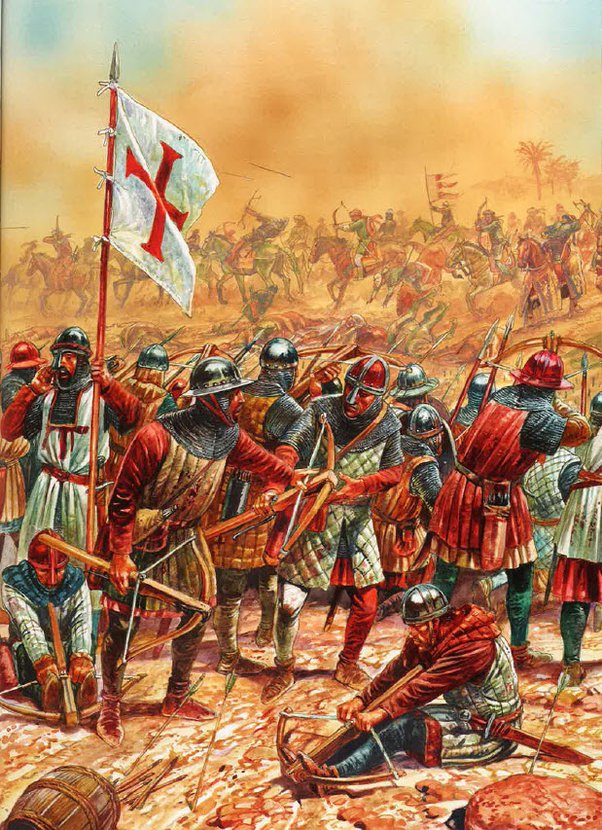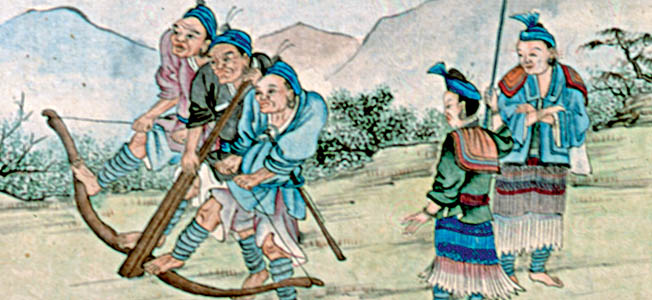Footbow
Footbow
Footbow. Foot bow. Two words? One compound word? I’ll go with the compound version and from now on use footbow as one word. So, how did this peculiar technique of shooting a bow with the aid of one’s feet come about? There are some historical examples of this technique and/or type of bow being used in the past. The primary practitioners of this technique in modern times are flight shooters. Those who are seeking to shoot an arrow as far as possible. In this article, we’ll take a look at this method as well as some history. Without further ado and without any puns intended, let’s step into the world of footbows.

Footbow Defined
There are many terms in archery that seem somewhat unclear to the uninitiated or those not intimately involved in archery. The term footbow may be confused between two definitions. The one definition is simple enough to grasp, a footbow is a bow used on foot, aka with the archer standing with their feet on the ground. Most bows are indeed used this way today. In the past, however, in various cultures, specifically those of the Eurasian steppe, most bows were utilized while on horseback.
Now take this definition of footbows and put it aside for now. In this article, we are precisely referring to when we say “footbow” is a bow held or braced with the feet, while the archer pulls the string back using their upper body. This is done with the archer sitting on the ground. The bow is braced with the feet and the legs are elevated to roughly a 45-degree angle to the ground. The archer uses their upper body, leaning backward to allow gravity and their body weight to assist in drawing the bow.
This technique is for drawing very heavy bows, (200 pounds plus) and is used primarily today for flight shooting. Check out our article on flight shooting here for more information.

Historical Usage of Footbows
Some historical examples of the usage of the footbow technique come to us from various areas worldwide and throughout history.
In medieval China, during the Song Dynasty (960–1279AD), this method, of sitting and/or lying down and using one’s feet to brace the bow, was used to draw crossbows. For more on crossbows in general, check out thecrossbowguide.com.
Other accounts come from the indigenous peoples of South America. The technique was apparently used in war and hunting birds. The technique seems to be effective for bird hunting as large bows with heavy draw weights are required to shoot the required distance up to where flocks of birds fly. Also, once the bow is at full draw the archer finds himself lying back looking up at the sky, a good position to be in if hunting birds.

Chinese Footbow
As mentioned, this technique, of drawing the bow while sitting and bracing the bow with the feet, was apparently widely used in medieval China. Well, the technique was not really used with a standard archery bow, but rather with a crossbow. The act of bringing a crossbow to full draw is known as spanning the crossbow. Without the use of mechanical aids, this method of using one’s feet and full upper body gives great leverage in order to span heavy crossbows.
It may have been noticed that after bringing the crossbow to full draw with the footbow method you could in fact fire from this position as well. After the arrow or bolt is released, the operator remains in a good position to reload and repeat the process. This tactic does not rely on individual accuracy, but rather on the sheer volume of fire. The proper range to the enemy is all that is required as opposed to pinpoint accuracy.
The medieval Chinese are well known for their deployment of crossbows in battle. Several gradual improvements and modifications were made to their crossbows over time, and they even developed a repeating crossbow, the Chu Ko Nu.
As some may be aware, this method of using massed crossbowmen shooting the footbow method is on full display in the 2002 movie “Hero” starring Jet Li.

Harry Eugene Drake
An article on the footbow would not be complete without the mention of Harry Drake. Harry Drake was born in Kansas on May 7, 1915. He would go on to become a pioneer in the development of modern recurve and compound bows. However, Harry Drake is most remembered for his involvement in flight shooting, seeing how far one is able to shoot an arrow.
Flight shooting involves just as much or more engineering and manufacturing than shooting. The flight bows developed by Harry Drake were designed and built by him from the scratch. Some were hand-held models and some were footbow designs.
Harry Drake was the first person to shoot an arrow over 600 yards since the time of the medieval Turks (May 31, 1947, Southern California Archery Association tournament – 603 yards). Apparently, Drake was also the first person to be recorded shooting an arrow over 1 mile.
Since the late 1940s, no one has accumulated more flight shooting records. One of these records was set by a foot bow. Drake broke the world record for the longest shot with a footbow on October 24, 1971, with a shot that flew 2,028 yards.
As well as flight bows, Drake manufactured several hunting recurves which were widely considered extremely well-built and high-performing bows. He later went to work for Browning, the arms manufacturer, when they opened their archery division. He had a hand in developing some of their earlier hunting bows including the Browning Explorer as well as the Stalker.
